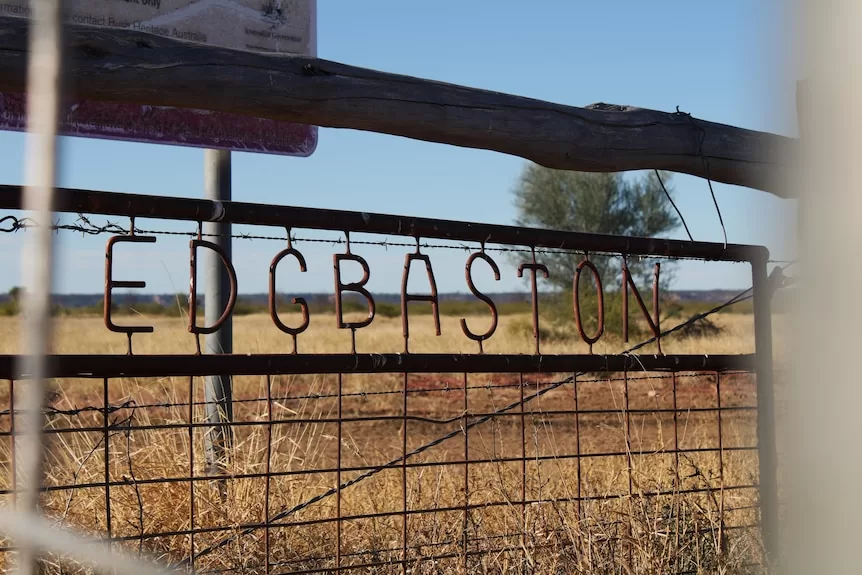Once a cattle station, this land in outback Queensland is also home to more than three dozen unique species found nowhere else in the world.
Unique species of fish, snails, and crustaceans have existed on this isolated property since the dinosaur age when it was deep under water as part of the Eromanga Sea.
Edgbaston Reserve, 140 kilometres north-east of Longreach, is an ecological site of “global importance”, which has just been granted special protection by the state government.
“It’s a mecca for Australian fish enthusiasts,” aquatic ecologist Renee Rossini says.
Dr Rossini works for the conservation not-for-profit organisation Bush Heritage Australia, which purchased Edgbaston Reserve in 2008.
“Nearly every species on this property should be classified as critically endangered just because of its history of decline and the narrowness of its range,” she says.
“It’s kind of an ongoing mystery about why this particular location has so many species in so many groups.”
Ecologists enthralled and concerned
Amid patches of spiky spinifex grass at Edgbaston, the sunlight glints off shallow pools of water.
Dr Rossini takes off her boots and wades in.
“There’s a big boy there!” she says, pointing with a net.
The fish in question is barely visible to the untrained eye but it’s the “flagship” species on the reserve: the red-finned blue-eye.
The tiny freshwater fish is only found in Great Artesian Basin springs on Edgbaston Reserve and was on the brink of extinction when discovered on the property in 1990.
Since then, scientists have carefully re-cultivated the red-finned blue-eye population along with 36 other species unique to Edgbaston.
“We have about 10 times more species that are endemic to these springs on this property than anywhere else in Australia,” Dr Rossini says.
“It’s ecologically amazing.”
What makes it so special?
The dozens of springs bubbling up through the cracked claypan on Edgbaston Reserve delight ecologists.
They can vary from “tiny little patches … to metres and metres of open water”.
To reserve ecologist Dean Gilligan, they’re just as important to Australia’s environment as the Great Barrier Reef.
“The Edgbaston Springs have been rated as one of the top three most important sites for springs biodiversity in the world,” Dr Gilligan says.
“There’s nothing that really compares.”
The arid landscape of outback Queensland has become dotted with hundreds of re-emerging springs as the Great Artesian Basin (GAB) recovers from unregulated bore drilling.
When Bush Heritage first purchased the property, it identified around 70 springs.
Sixteen years later, ecologists have mapped close to 300 re-emerging springs.
Dr Gilligan explains that, millions of years ago, Edgbaston Reserve would have been part of an inland sea.
When the water receded leaving a dry desert, the craftiest marine creatures took refuge in the GAB springs that remained.
“This used to be the Eromanga Sea and there used to be dinosaurs and marine reptiles … but these guys, because of the permanent water, have been able to survive for the thousands of years it takes to evolve,” Dr Gilligan says.
Out of the 37 species found only on Edgbaston Reserve, 34 of them are spring-dependent.
Survival depends on the springs
Both ecologists are keenly aware that their work to protect the endangered and vulnerable inhabitants of Edgbaston Reserve depends on the health of the GAB.
“We can control the weeds, we can control the gambusia [mosquito fish] … we can control the pigs, but what we can’t control is the water,” Dr Gilligan says.
“The quality and the quantity of the GAB water that feeds the springs is beyond our control.”
Dr Rossini said the Edgbaston fish and other species have only survived due to the very specific conditions of GAB springs.
“If the basin wasn’t strong enough to maintain those conditions the majority, if not all, of these species die,” she says.
New protection in place
The state government has just declared Edgbaston Reserve as a special wildlife reserve, giving the private property a national-park level of protection.
This means any future mining, logging, and grazing is prohibited.
Edgbaston Reserve is the second in Queensland to hold the status, after Pullen Pullen Special Wildlife Reserve.
The Minister for the Environment Leanne Linard says Edgbaston Reserve is a critical site to preserving the Lake Eyre Basin.
Reserve manager Sam Jackson says it will add an extra layer of shielding for the property.
“It’s worth protecting,” he says.
“Because once it’s gone, you can’t get it back.”
Get our local newsletter, delivered free each Tuesday
